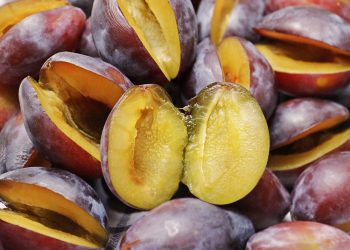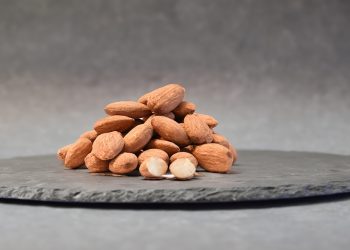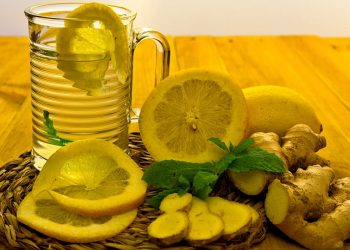10 Simple Swaps for a More Sustainable Diet—if you’re looking to make choices that benefit both your body and the planet, you’re in the right place. A sustainable diet isn’t just a trendy phrase; it’s a lifestyle shift that impacts our health, environment, and future generations.
Why does this matter? Because every bite you take can either harm or heal. It’s time to take control of what’s on your plate and make choices that resonate with your values. Let’s dive into ten simple swaps that can transform your meals and, ultimately, your world.
Contents
- Understanding the Impact of Your Food Choices
- 1. Meat to Plant-Based Proteins
- 2. Dairy Milk to Nut or Oat Milk
- 3. White Rice to Quinoa or Brown Rice
- 4. Processed Snacks to Whole Foods
- 5. Conventional Produce to Organic or Local Options
- 6. Sugar-Heavy Condiments to Homemade Versions
- 7. Frozen Foods to Seasonal Fresh Foods
- 8. Single-Use Containers to Reusable Options
- 9. Imported Foods to Local Staples
- 10. Meat-Based Dishes to Vegetable-Centric Meals
- Making the Swaps Work for You
- Bottom Line
Understanding the Impact of Your Food Choices
A sustainable diet focuses on foods that are healthful for you and the environment. This means prioritizing plant-based options, reducing waste, and choosing local and seasonal ingredients. The benefits are undeniable: you’ll feel better, help combat climate change, and support local economies.
1. Meat to Plant-Based Proteins
Swap out: Beef, chicken, and pork
For: Lentils, beans, and chickpeas
Meat production is a leading contributor to greenhouse gas emissions. By incorporating more plant-based proteins into your meals, you’re not only reducing your carbon footprint but also adding fiber and nutrients to your diet. Lentils and beans are versatile and can be used in a variety of dishes—from hearty soups to flavorful salads.
2. Dairy Milk to Nut or Oat Milk
Swap out: Cow’s milk
For: Almond, soy, or oat milk
The dairy industry is resource-intensive, requiring vast amounts of water and land. Switching to nut or oat milk can significantly reduce your environmental impact. These alternatives are often fortified with vitamins and can be just as creamy in your morning coffee or cereal.
3. White Rice to Quinoa or Brown Rice
Swap out: White rice
For: Quinoa or brown rice
White rice has its place, but it’s not the most sustainable choice. By choosing quinoa or brown rice, you’re opting for grains that are more nutrient-dense and require less water to grow. Plus, quinoa is a complete protein, making it an excellent addition to your meals.
4. Processed Snacks to Whole Foods
Swap out: Chips and cookies
For: Fresh fruits, nuts, or homemade energy bars
Processed snacks often come in packaging that contributes to waste and are loaded with unhealthy ingredients. Instead, reach for fresh fruits or nuts. They’re not only better for your body but also come with minimal packaging. Consider making your own energy bars with oats, nuts, and honey for a satisfying and sustainable treat.
5. Conventional Produce to Organic or Local Options
Swap out: Store-bought conventional fruits and veggies
For: Organic or locally-sourced produce
Conventional agriculture often relies on harmful pesticides and fertilizers. By choosing organic or local produce, you support farming practices that are better for the environment. Plus, local fruits and vegetables are often fresher and tastier, making your meals more enjoyable.
6. Sugar-Heavy Condiments to Homemade Versions
Swap out: Store-bought sauces and dressings
For: Homemade alternatives
Many store-bought condiments are packed with sugar and preservatives. Instead, try making your own using simple ingredients. A homemade vinaigrette with olive oil, vinegar, and herbs can not only elevate your salads but also eliminate unnecessary waste from packaging.
7. Frozen Foods to Seasonal Fresh Foods
Swap out: Frozen fruits and veggies
For: Seasonal fresh produce
While frozen fruits and vegetables can be convenient, they often involve energy-intensive processing and packaging. Choose seasonal fresh produce whenever possible. Not only will you enjoy superior flavor, but you’ll also be reducing your reliance on energy-intensive methods of food preservation.
8. Single-Use Containers to Reusable Options
Swap out: Plastic wrap and bags
For: Beeswax wraps and glass containers
Plastic waste is a significant issue for our planet. By choosing reusable containers and wraps, you’re cutting down on single-use plastics that often end up in landfills. Plus, they’re often more durable and can keep your food fresher for longer.
9. Imported Foods to Local Staples
Swap out: Exotic fruits and imported snacks
For: Local fruits and veggies
Imported foods come with a hefty carbon footprint due to transportation. By opting for local staples, you’re not only supporting your community but also enjoying foods that are in season and often fresher. Think about how good a locally-grown peach tastes in the summer!
10. Meat-Based Dishes to Vegetable-Centric Meals
Swap out: Meat-based entrees
For: Veggie-centric dishes
Instead of making meat the star of your plate, let vegetables shine. Dishes like stir-fried greens, grain bowls, or vegetable curries can be filling and satisfying. Plus, they’re often lower in calories and higher in nutrients, making them a win-win for your health and the planet.
Making the Swaps Work for You
Transitioning to a more sustainable diet doesn’t have to be daunting. Start small. Choose one swap a week and build from there. Keep it fun and engaging. Experiment with new recipes and flavors! For inspiration, check out resources like The Environmental Working Group or FoodPrint for ideas on sustainability in your kitchen.
Bottom Line
Adopting a more sustainable diet through these 10 simple swaps is not just a trend; it’s a commitment to better health for you and a healthier planet for future generations. Every meal is an opportunity to make a positive impact.
Start today. Choose one swap, and see how it feels. You’ll be amazed by the difference small changes can make. Your body will thank you, and so will the Earth.
FAQs
Q: What are the benefits of a sustainable diet?
A: A sustainable diet supports personal health, reduces environmental impact, and promotes local economies.
Q: Can I still enjoy my favorite meals while making these swaps?
A: Absolutely! Many traditional recipes can be adapted with sustainable ingredients while maintaining flavor.
Q: How do I find local produce?
A: Check out local farmers’ markets, community-supported agriculture (CSA) programs, or farm stands in your area.
Your journey toward a more sustainable diet starts with a single choice. Make it count!
Get Your FREE Natural Health Guide!
Subscribe now and receive our exclusive ebook packed with natural health tips, practical wellness advice, and easy lifestyle changes — delivered straight to your inbox.














